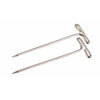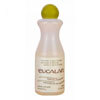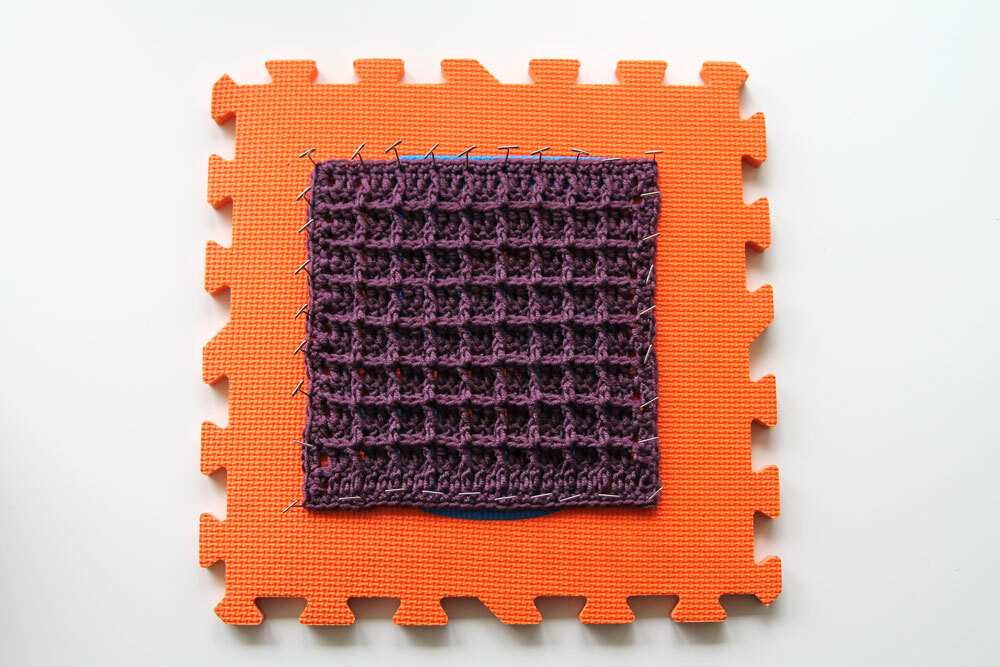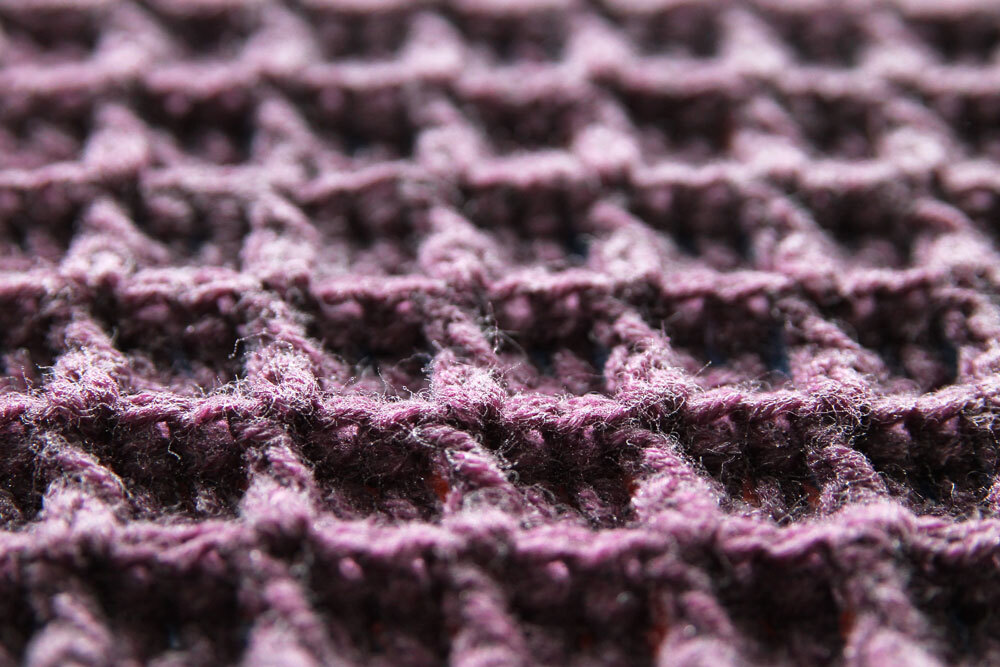Spray blocking is one of three methods of blocking your handmade item (see related articles). It is very similar to wet blocking, only you don’t soak the piece. Hence, it’s a fairly ‘quick’ method. However, with spray blocking, you do not remove excess dye from your yarn, as wet blocking does. So take care and use a colour catcher when you wash your items for the first time.
Related articles:
Materials needed
Necessary:
 | Blocking mats. The sturdy mats will help you pin down your work. (available on Wool Warehouse (UK) or Amazon). |
 | T-pins. I prefer T-pins over regular pins. They’re sturdier and easier to place. Whatever you choose, make sure they’re made out of stainless steel (available on Jimmy Beans Wool (US) or Wool Warehouse (UK) ). |
 | Eucalan, a leave-in yarn detergent. Technically not necessary, but I heavily recommend using it (available on Wool Warehouse (UK) and Jimmy Beans Wool (US) ). |
Nice to have:
 | Blocking wires. These will help you block larger items such as shawls and blankets. (available Wool Warehouse (UK) or Jimmy Beans Wool (US)). |
 | Rainbow Blockers. These will speed up your blocking process by placing multiple pins at one go (available at Wool Warehouse (UK) or Jimmy Beans Wool (US)). |
Necessary:
 | Blocking mats. The sturdy mats will help you pin down your work. (available on Wool Warehouse (UK) or Amazon). |
 | T-pins. I prefer T-pins over regular pins. They’re sturdier and easier to place. Whatever you choose, make sure they’re made out of stainless steel (available on Jimmy Beans Wool (US) or Wool Warehouse (UK) ). |
 | Eucalan, a leave-in yarn detergent. Technically not necessary, but I heavily recommend using it (available on Wool Warehouse (UK) and Jimmy Beans Wool (US) ). |
You will also need a mist sprayer.
Nice to have:
 | Blocking wires. These will help you block larger items such as shawls and blankets. (available Wool Warehouse (UK) or Jimmy Beans Wool (US)). |
 | Rainbow Blockers. These will speed up your blocking process by placing multiple pins at one go (available at Wool Warehouse (UK) or Jimmy Beans Wool (US)). |
Spray blocking tutorial
Step 1: Pinning
Take your blocking board and pins and pin your item into shape. If you have picots or shells in your pattern, pay extra attention to them to really open the pattern up. You may stretch your piece a little, but make sure not to form any peaks by overstretching your yarn.
For this tutorial, I’ve used a square that I wanted to be 19cm square. After making it, it was approx. 18cm in height and width, but it had lots of wrinkles and an awkward shape. I pinned it to 19 x 19cm. If you have to pin large distances, such as in blankets or big shawls, blocking wires can definitely help you out.

Step 2: Spraying
If you have Eucalan, mix a little bit into the spray bottle as the instructions on the Eucalan say and fill the bottle up with water. Put your spray bottle on mist and spray the mixture all over your crochet until it is moderately wet. It does not have to be dripping, but make sure the fibre is at least moist. Give it a second round if you’re not sure if it’s wet enough.

Step 3: Drying
Leave the piece to dry overnight. Don’t unpin it until it is completely dry. This might take up to 24 hours or even longer, depending on the fibre. Heavier yarns will take longer to dry compared to lacy and light yarns. After unpinning, you will notice your piece looks better, feels softer and has a better drape too!




Comments